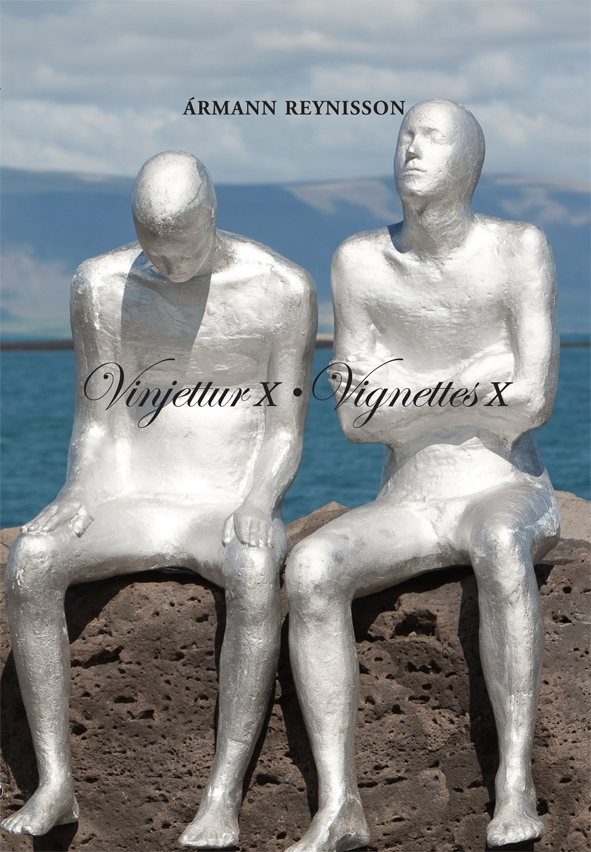Vignettes XIV
Icelandic cuisine has evolved considerably since Ármann Reynisson was a child and he has found it a pleasure to follow its development over the years. Approximately half of the 43 stories in Vignettes XIV concern traditional restaurants in Reykjavík as well as the people who run them, the settings and the ambience. And it is the personalities described in these stories who are playing their part in lifting Iceland’s food culture to international heights. There are also portrait-vignettes of a few of the more colourful personalities of the country, as well as interesting characters that the author has encountered on life’s journey. There is also varied material to be found from other walks of life and the book ends with a vignette about the last water bearer in Iceland.
Chapters
Hótel Borg
Hótel Borg is located at Austurvöllur, the most distinguished square in the country. It is a classical building, taken into use in the memorable year of the parliament festivities when we celebrated our parliament’s one-thousandth anniversary in nineteen hundred and thirty. The entrepreneur Jóhannes, the wrestling King known by the name Jóhannes Borg, builds this palace when he returns home from America with a pocket full of cash from his days working for the circus far and wide across the vast land where he attracts much attention for his physique and prowess. Since then, some major events have taken place in the banquet halls of the hotel, which has long been considered among the finest hotels in the Northern hemisphere. In the fourth decade of the twentieth century, the heroic Italian pilot Bilbaó and his comrades dance the waltz there with the young ladies of Reykjavík. As the World War is raging, Winston Churchill dines in the restaurant and then smokes a Havana cigar for pleasure. Not long after, actress Marlene Dietrich sings in the Golden Hall and charms the audience with her elegant presence and her soothing voice. In the ninth decade, Ármann at Ávöxtun holds his memorable parties. For a long time, it was the tradition to dance on Sunday afternoons and later in the evening on weekends. There are also meetings held there by political parties and non-governmental organisations. Colleagues
meet there for decades for afternoon coffee to discuss current affairs. Not forgetting the Christmas tree entertainments that excite the children during the holidays.
Páll the waiter
A considerable time before each reception begins, the waiter turns up in his daily clothes, puts on a bottle-green apron and begins to help the host with all the preparations. In addition, he walks around the home to check if everything is as it should be. Then the waiter fetches the crystal glasses, china and tableware as appropriate and wipes them down if needs be. Then he starts on the trays, tablecloth and cotton napkins, which he folds and shapes with artistic flare.
Afterwards, he places everything beautifully on the table, the flowers are arranged, the candles are lit and the lighting adjusted. If there is to be a dinner party, the waiter discusses all arrangements with the chef beforehand. Before the guests arrive, he goes aside and gels back his thick black hair, puts on his face cream, and thoroughly washes his hands. He then changes into formal dress and matching gloves and finally, his freshly polished shoes. Now the waiter is ready for service and with a white cloth over his right arm, he respectfully greets the guests
with a nod of the head, a grin, sparkling eyes and sealed lips.
Hafliði the master chocolatier
Early in the new century there is a picture in the newspaper of a handsome dark haired man smiling in a white baker’s apron. Interestingly, his right hand is covered in chocolate and it is being raised to his mouth as if the man is about to take a bite of his thumb. It comes as no surprise that this is a master chocolatier who is breathing new life into the chocolate culture in the country. The master creates his own variety of assorted chocolates produced from a selection of natural ingredients. All ingredients are of the highest quality and he gathers them from producers far and wide in distant lands. The ingredients used make a considerable difference to the quality of the product. Each and every chocolate is handmade.The result is impressive. The chocolate melts in your mouth and the flavours tickle the senses leading to a moment of unadulterated pleasure. Customers who visit Hafliði Ragnarsson’s chocolate shop downtown on Háaleitisbraut experience an international ambience, which offers some of the best chocolate you can find
anywhere in the world.
Chef Úlfar
On “Beer Day,” the first of March nineteen eighty nine, the sea-weathered middle-aged man opens his own restaurant “Þrír Frakkar” in Reykjavík. From that point on, Úlfar dedicates himself to the cooking of seafood. He has contacts all over the country and beyond for special produce which he rounds up – even those foods that were ignored for centuries as they were deemed unfit for human consumption. His imagination is unlimited, he is always trying something new
and he has an eye for making attractive food. In this way, the chef lays new foundations for traditional Icelandic cuisine, the impact of which has spread far and wide.
Laxnes Horse Farm
On the way to Þingvellir, where the heart of the nation beats, as you drive East on Vesturlandsvegur road, there is an outstretched, grassy meadow after Mosfellsdalur with a considerable amount of trees and low mountains. Quickly approaching, on the left-hand side, is Mosfellskirkja Church, which sits high off the road and fits harmoniously into the surrounding landscape. Very soon, one catches sight of the horse farm, Laxnes, which sits on old foundations on ancient land. It has attractive outhouses behind the main house and a sectioned-off area
for the horses at the front of the building. When driving along the side-road, the traveller notices Köldukvísl River, which winds down the valley. From the farmyard, there is a magnificent view west over the district, all the way out to sea.This is where the Nobel laureate Halldór Laxness grew up, where he absorbed knowledge and where he took his first steps into the world of fame and glory.
The pastor
Gradually, the pastor becomes more and more dominating in his behaviour, both in religious matters, as well as in human interaction. Members begin to be driven out of the congregation one by one, some with tears in their eyes, even weeping over the insolent behaviour of their leader. After the older woman has passed away, things quickly start to fall apart within the congregation. In the end, the pastor is left on his own with the young woman in his arms and the couple
reap the fruits of the congregation’s labour.
The last water bearer
A man of small stature walks along a stone road in the village of Þórshöfn, humming a tune so that it can be heard far and wide. He does this all year round in most weathers. A bar rests across his shoulders from which there are two iron buckets hanging, one at either side. The water bearer is not much to look at. He is a short fellow with unkempt hair, hunched over in rags with a scruffy cap; he has the remnants of gloves on his hands and wears mismatched wellington boots.
There is a sweaty stink about him. Some people simply try to ignore him while others go out of their way to avoid him. The man is good with children but some of them reward his kindness with mockery and laughter. This hurts the water bearer and he begins to well up. But despite this, Valdi Fúsa, as he is known, always seems to be happy. And his warbling laugh makes many people smile, not to mention the original quatrains he composes on the spot.



